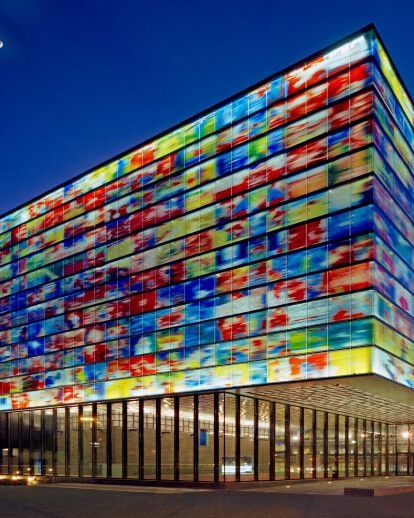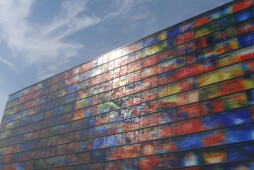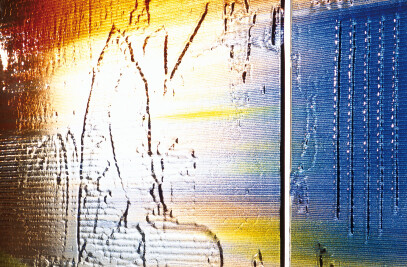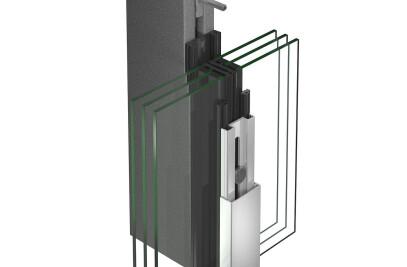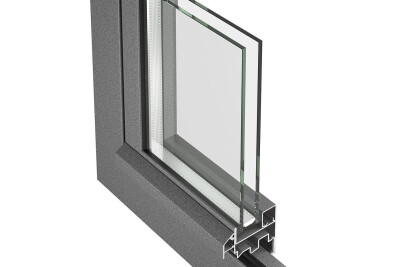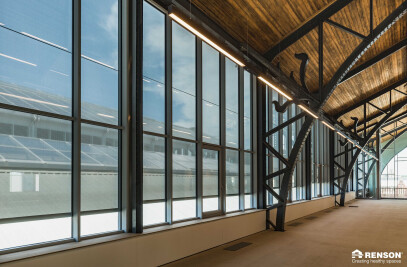The Netherlands Institute for Sound and Vision divides into three distinct elements, each designed as a separate volume: the national archives, where all the audiovisual material ever produced since the early days of Dutch radio and television is preserved, the TV and Radio exhibition centre for the public and a research institute for professionals.
The audiovisual archives - that need rigorously strict climatic conditions but no daylight - are conceived as five underground vault floors. The exhibition rooms are organized in a huge ziggurat shape floating in the air. The institute’s offices are housed in a simple slab on the side. Together these three distinct volumes form one giant cube, half above ground and half under ground, while leaving a giant empty space in the middle. This central space stitches together all the components of the institute.
It is the central public atrium for visitors, professionals and collaborators, used for gatherings of the television community in the Media Park. The upside-down cascade of the stepped museum floors, clad in metal vibrating plates, registers as a wall sculpture that shapes and scales the internal space of the building. From the entrance the visitors are guided via a bridge over a deep canyon that dramatically shows the scale and sheer size of the archives vault. One of the canyon's sides is a flush wall with windows that radiate an orange gloom, as if the concealed sounds and images speak to the visitor from within the archives. On the other side of the canyon rises a series of inverted terraces that contain the viewing studios for professional researchers. Zenithal daylight streams in through the skylights down to the lowest levels of the vault. Coloured and tempered light enters through the glazed frontage of the superstructure.
The glass façade is based on original TV-images that were taken from the archives of the institute and translated into 2100 different coloured high relief glass panels, composed by graphic designer Jaap Drupsteen. In this way the quality of light transmitting trough contemporary stained glass windows was achieved, giving the building a lightly tactile surface, where iconic images of Dutch TV-history appear and disappear during the day in the breaking of the light.
